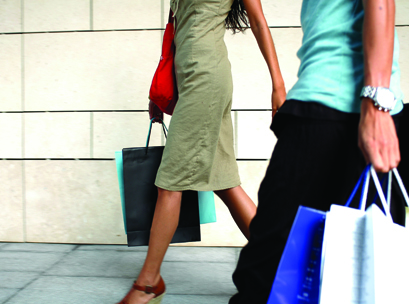 Industry associations say the latest retail spending figures show a ‘stable’ start to the second-half of the year, despite the strain of low wages growth and higher power bills on household budgets leading to a pause in retail spending growth in July.
Industry associations say the latest retail spending figures show a ‘stable’ start to the second-half of the year, despite the strain of low wages growth and higher power bills on household budgets leading to a pause in retail spending growth in July.
National retail spending increased by 3.5 per cent year-on-year in July with monthly retail turnover up 0.3 per cent in seasonally adjusted terms following a 0.4 per cent rise in June 2017.
Seasonally adjusted, retail spending was at $26.1 billion.
The end of a run of three months of growth reflects a retail sector struggling with declining consumer sentiment, rising household debt, stagnant wages growth and a 15 to 20 per cent hike in utility prices on July 1, economists said.
Russell Zimmerman, Australian Retailers Association executive director, said the July trade figures continued to show stable growth, and were a positive sign leading into the warmer months.
“Year-on-year growth remains strong for the retail industry with household goods, especially hardware, driving the figures,” Zimmerman said.
The household goods category achieved overall growth of 4.62 per cent, while Department Stores recorded year-on-year growth for the first time this year with a 1.28 per cent rise.
“It is encouraging to see the hardware sector continuing to show robust growth year-on-year, with a 5.02 per cent increase,” Zimmerman said.
“With the end of deep discounting events after the closure of Masters, the continued growth in the hardware sector as sales begin to normalise is a good sign for the retail industry as a whole.”
Zimmerman said the return to growth in department stores was largely attributed to the early offering of spring fashions at the tail end of winter.
“New season fashions have brought customers back into the department stores, and the increase in sales bodes well as we move into summer.”
Clothing, footwear and personal Accessories continue to face tough conditions, with a modest 1.28 per cent year-on-year increase.
Food retailing continued to remain strong, recording a 3.88 per cent increase year-on-year, largely driven by continued strength in the supermarket sector with a 3.90 per cent increase and a 1.51 per cent increase in specialised food.
Online retail turnover contributed 4.3 per cent to total retail turnover in original terms.
Dominique Lamb, National Retail Association (NRA) chief executive officer, said the trend estimate increase for July shows that retail is in a stable state at the moment.
“But we expect that to pick up as we head towards Christmas,” Lamb said.
The figures come off the back of the Reserve Bank of Australia (RBA) on Tuesday opting to keep interest rates on hold at a record low 1.5 per cent.
“The RBA’s decision to keep interest rates on hold at a record low 1.5 per cent should give retail the kick along it needs as we approach Christmas,” Lamb said.
“From retail’s perspective, it is important that consumer confidence is as high as possible and low interest rates certainly help to foster that.”
AMP Capital senior economist Diana Mousina said consumer spending is shifting away from traditional retail outlets and towards services, such as holidays, recreation and eating out.
But consumer sentiment is also low and wages growth is not keeping up with inflation.
“These cyclical pressures are unlikely to abate any time soon and may get worse due to rising utility prices, the high Australian dollar shifting demand for retail goods offshore and the impact of Amazon’s physical arrival in Australia,” Mousina said.
Year-on-year, all states recorded growth with Victoria (5.63 per cent) and New South Wales (4.18 per cent) in the lead. The Australian Capital Territory (3.95 per cent), Tasmania (3.53 per cent), and South Australia (2.99 per cent) recorded a moderate increase year-on-year. The Northern Territory (2.96 per cent), Queensland (2.44 per cent) and Western Australia (1.37 per cent) showed gradual increases.
Each state and territory recorded a rise in trend terms for July: New South Wales (0.4 per cent), Victoria (0.4 per cent), Queensland (0.2 per cent), Western Australia (0.2 per cent), South Australia (0.2 per cent), Tasmania (0.5 per cent), the ACT (0.3 per cent) and the Northern Territory (0.4 per cent).
Access exclusive analysis, locked news and reports with Inside Retail Weekly. Subscribe today and get our premium print publication delivered to your door every week.





